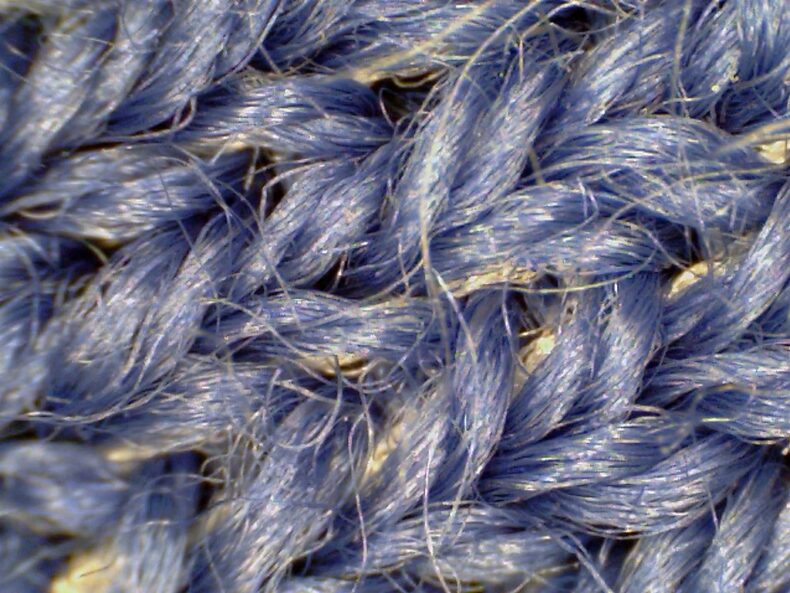
I grew up sewing most of my own clothes and developed an abiding and expensive fixation on beautiful fabric. Once I was in Florence at a store buying fabric, textiles (tessuti), as a gift for my mother. I stipulated in toddler-Italian a light wool (leggera lana) in blue (blu) for a dress for my mother (vestito per la mia madre). The sellers of tessuti in Florence are interested in gifts for mothers and full of information, opinions, and intensity. He hauled down from his shelves a bolt of wool, soft grey-blue, and unrolled it on the counter, thump thump, and ran the fabric out so I could see it was like no wool I had seen before. It was smooth, both light and firm; it caught the light; it was silky. He grabbed a handful of it, shook it a little, and said something in adult-Italian that I didn’t recognize but could still understand and answer. “It has a good hand,” I said. And he said “Si, assolutamente,” So I bought, at a price that was staggering but worthy of the hand, four yards of it.
We speakers of English use “hand,” taken direct from the Germanic, enthusiastically and variably: hand over, out of hand, hand to hand, first hand, handy. Physics experimentalists are sometimes said to have good hands. And since English is half Latin and “hand” is “manus,” we use manus similarly: manual, manufacture, manuscript.
The use I’m currently interested in was in a book in which one character asked another if he could read “secretary hand.” I’d heard the phrase, assumed in meant some kind of handwriting but looked it up anyway and such riches, not just one kind of handwriting but choices of handwriting depending on what was written, hand over hand, one hand after another!
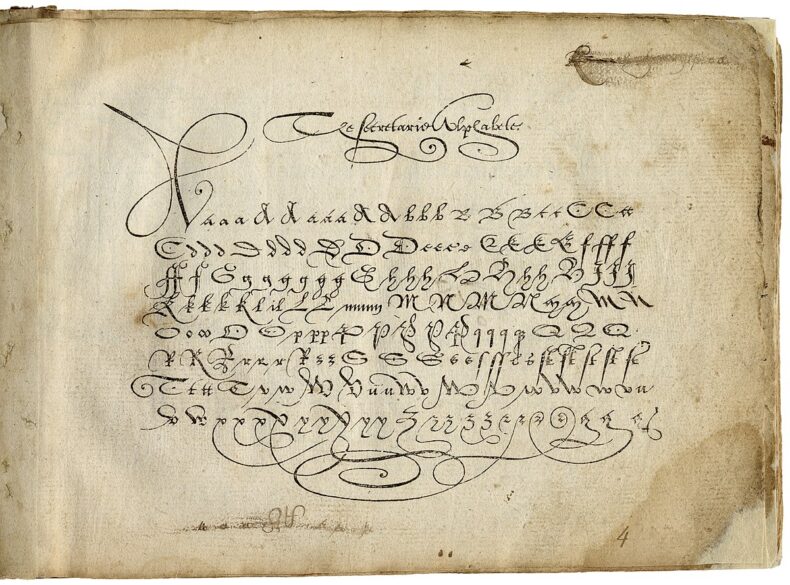
This is secretary hand. It was used in the 1400s through 1600s, written by professional copyists like the one who copied Shakespeare’s will.
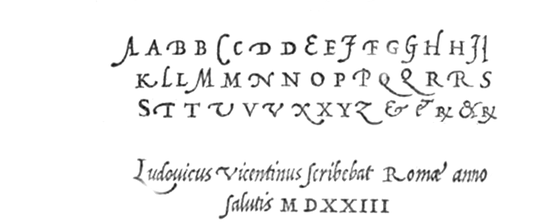
This is chancery hand, used for business transactions, same dates as secretary hand.
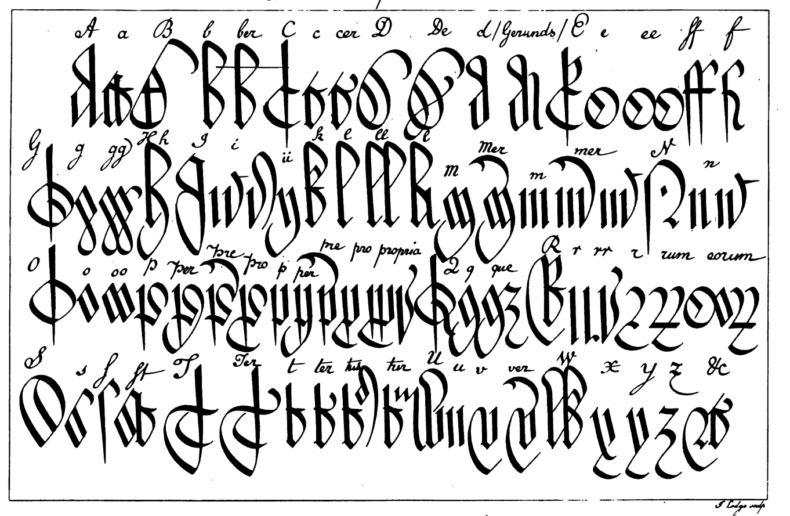
This is court hand, used earlier beginning in the 1200s, for records in medieval law courts.
The history of handwriting, though obviously googleable, doesn’t google well and I had trouble finding reliable sources on secretary, chancery, court, and other hands: what they were used for, when they were used, who used them, how much they overlapped. The sources that seemed to know what they were talking about were two websites by a graphic designer and a calligrapher. In general, hands seemed to have changed as professional scribes were being put out of work by increasingly literate populations, and as succeeding hands became easier to write. In fact, one later hand, Italian hand, was so easy and lovely that ladies were encouraged to use it.
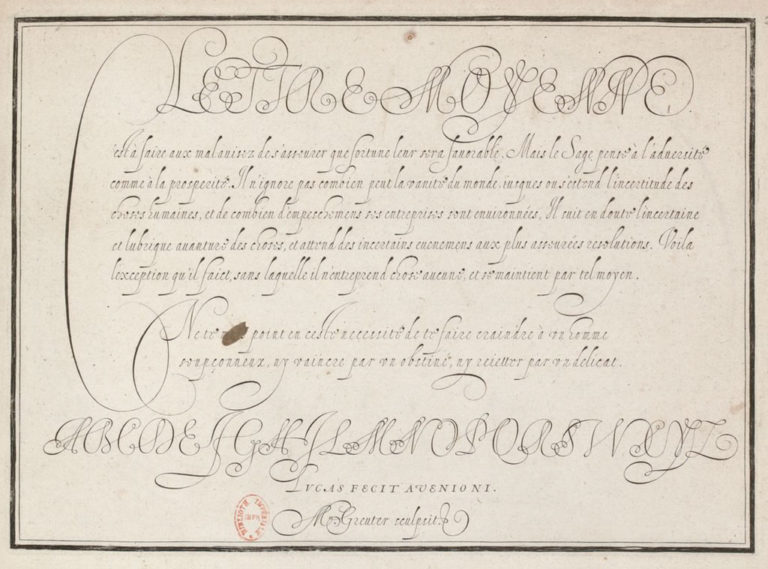
This is Italian hand. It was used in the 1600s through the 1800s. I think this (admittedly skimpy) history of handwriting must be related to the history of type fonts, which when I last wrote about it I also skimped on, and not only because I had trouble finding both histories; I’m also not terrifically interested in them. I like words better, I like the way words are used, and here’s a beaut.
I use a phrase I heard somewhere, “a fine Italian hand,” as in “That dinner party showed Janie’s fine Italian hand,” meaning a combination of elegance, parsimony, subtlety, and beauty with a little Machiavelli thrown in. I had no idea until I started running around googling, no idea whatever, that a fine Italian hand was literally handwriting — delicate, fancy, and graceful. Not unlike the soft wool the Italian tessuti seller showed me that I gave to my mother who did indeed make herself a dress which she loved and I loved her in it, and which she eventually wore at her own funeral, so good was that fabric’s hand.
________
The top photo is from Wikimedia Creative Commons, as are all examples of hands also courtesy of Wikimedia Creative Commons except the last one, Italian hand which I ganked without permission from pennavolens.com and if necessary, I’ll delete it.
I remember buying silk fabric in Italy. The price was indeed staggering but the selection was staggeringly beautiful. Many years later I worked at a local fabric store whose owner had a weakness for silk and so bought more than was sold. I had to stay away from that part of the store, but to this day, I still have 2 pieces of Pendleton wool, which is not as fine as your Italian wool, but beautiful, and will probably be bequeathed in my will. And, “Janie”? Also beautiful name.
Possibly the feeling for fabric is genetic? Remember that blue wool dress Mom made and someone embroidered for her? that was the wool. And “Janie” is wholly made up, I assure you, any resemblance a coincidence.
I have to hand it to you…and I speak from first hand…you handled the topic superbly!
Lovely. It’st too bad the history of handwriting isn’t more preserved; I bet it could tell us loads about the language and culture of the times.
The success of an infielder depends on whether or not she has good hands.
What happened to the wool when you got it home?
I can believe that about infielders’ hands. I gave the wool to my mother, and she made herself a dress that she liked so much she wore it to her own funeral.
This is a beautiful piece of writing. I am going to send it to friends who have a deep appreciation for fine fabric and yarn.
And I am one of those friends of which you mentioned, Lisa Kelly ! This indeed was a beautiful article ! I too purchase fabric whenever I travel – and in making the garment with such fabric, I have a lasting memory of the places I’ve been !
Ann, you’re the best.